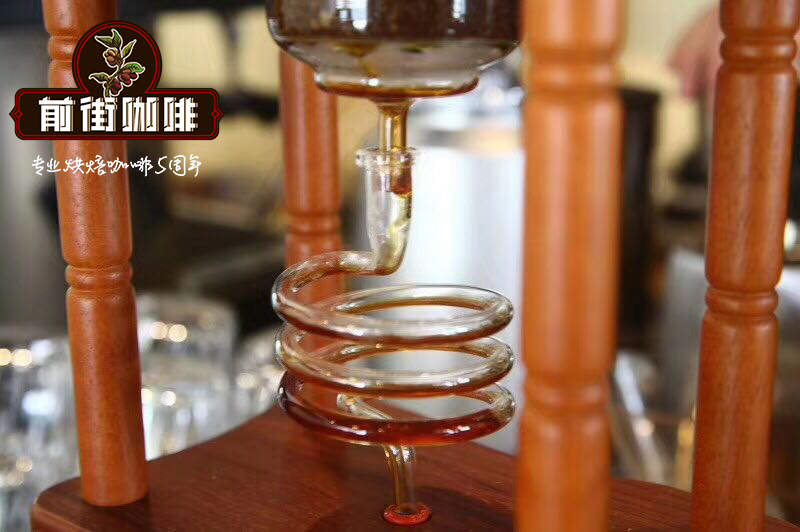What is the relationship between altitude and coffee flavor? What is the difference between coffee beans grown at low altitude and high altitude?

Professional coffee knowledge exchange More coffee bean information Please pay attention to coffee workshop (Weixin Official Accounts cafe_style)
Relationship between altitude and coffee flavor? What is the difference between coffee beans grown at low and high altitudes?
Not every place produces coffee of the same quality, not equally good, not equally bad. The first two important factors affecting coffee bean quality are geographical conditions and environmental factors, and farm management and post-harvest processing. Farm management and processing methods and precision, can achieve the same standard, in other words, management and processing differences can be minimized. Therefore, the most important factors affecting the quality of coffee beans are geographical conditions and environmental factors.
Latitude is a factor affecting quality characteristics, and high altitude also affects quality, which is a natural influencing factor. Today's topic is the elevation of coffee cultivation in Taiwan. Taiwan's geographical location, 500 meters above the high-altitude coffee production areas, 400 meters below the level of coffee production areas are medium and low altitude. In high altitude areas, it is best not to grow coffee higher than 1200 meters. Don't think that foreign information says that coffee produced at a height of 1500-2500 meters is of good quality, so you want to find a mountain area above 1500 meters in Taiwan to grow coffee. If you do that, there's a good chance you'll fail. Because the 2500 meters written in foreign data probably refers to the equator, there is little frost damage all year round, let alone snow; and Taiwan island more than 1000 meters above the mountain area, very few do not snow, encounter frost damage opportunities so many that you can not escape. Frost damage can seriously damage coffee operations.
Basically, coffee quality at higher altitudes is likely to be better than coffee quality at lower altitudes, and coffee at higher altitudes may also be defective and of poor quality if post-harvest processing is not properly carried out. Many coffee growers who grow coffee at high altitudes have a subjective view that their coffee must be better than others. It is also possible to have good coffee quality without sophisticated post-processing. If this is the case, it is only half right, that is, it is planted in a place that is more suitable for growing coffee, and the overall coffee quality is not so good.
Altitude affects the size and appearance of coffee beans observed over recent years. The green beans in high altitude areas are larger than those in low altitude areas, with higher density and dark blue or dark green color. Low altitude areas of raw beans smaller, softer density, color white, fragrance can not run out.
The overall influence factors are temperature and intensity and duration of sunshine. The higher the altitude, the lower the temperature; the lower the altitude, the higher the temperature performance. Temperature directly affects the quality of coffee beans. The leaf shape of coffee tree in low temperature area was larger than that in high temperature area, and the photosynthesis effect of large leaves was stronger than that of small leaves. As long as you look carefully at the coffee trees in the coffee garden, you will probably see that the leaves on the lateral branches will have large leaves and small leaves. Comparing the appearance time of large leaves and small leaves, small leaves appeared from late spring to late summer, when the ambient temperature was relatively high. The larger leaves are grown from autumn to spring. The period when large leaves appear is the period when coffee trees grow most vigorously.
During summer, leaf growth becomes smaller and photosynthesis has a lower ability to produce nutrients. The roots of coffee trees also stagnate, reducing their ability to extract nutrients from the soil. Coffee trees are semi-dormant at this stage. At this time, the coffee tree's own nutrient supply can not meet the needs of the tree, but also to support the needs of coffee fruit, not to mention this summer period is also the coffee fruit growth fastest stage, the most need for adequate nutrients. Therefore, if the nutritional care at this stage is not enough, it is easy to see the coffee trees in the coffee garden die for no reason. The more fruit coffee trees bear, the more likely they are to die. This kind of dieback belongs to dystrophic dieback. In low altitude areas, coffee trees and coffee fruits compete for nutrients, resulting in poor coffee fruit development and poor bean formation. The accumulation of nutrients in coffee beans itself is insufficient, which relatively affects the aroma performance after roasting.
Just because there are inherent limitations at low altitudes does not mean that there is no room for improvement. We can use shade trees to cool the coffee park and reduce the intensity of sunlight in the park. Another trick is to strengthen nutrition management, which can also reduce the stress of tree body caused by nutrient deficiency caused by high temperature in summer.
Coffee leaves at high altitudes are relatively large, dark green in color and thick in wax. Because of the small temperature change throughout the year, the chance of leaf size reduction in summer is less, and the nutrient stress caused by it is reduced. Strong leaves produce nutrients that are sufficient to supply the fruit. The fruit is relatively large, and the raw beans are large in size. Due to the sufficient nutrients stored in coffee beans, the color tends to be dark blue and dark green. After baking, the aroma is sufficient.
"Temperature" and "nutrition" are important factors affecting the quality of coffee beans. However, there is also a good chance of producing lower-quality coffee at higher altitudes, and there is also a chance of improving the quality of coffee beans at lower altitudes.
From the perspective of pests and diseases in coffee, high altitude and low altitude areas have different performances. Don't assume that coffee beans will be better at high altitudes, forgetting that high altitudes have diseases that are difficult to deal with. The most serious disease in this region is coffee leaf rust. Coffee growers at this altitude cannot be unaware of coffee leaf rust, let alone ignore the importance of its control.
In addition to strengthening nutrition management in low altitude areas, attention should also be paid to the prevention and control of various diseases.
Up to now, coffee planted in low altitude areas, especially in flat areas, has a relatively high amount of defective beans, and the production rate of raw beans is relatively low. The main reason for the low production rate is that the probability of blank bullets (no effect, black fruit) is high. As long as the cause of this disease is found and the right control method is found, the production rate of flat beans can also be raised to the standard value. The percentage of defective beans will also be minimized-almost zero. The goal of quality improvement will be achieved.
Important Notice :
前街咖啡 FrontStreet Coffee has moved to new addredd:
FrontStreet Coffee Address: 315,Donghua East Road,GuangZhou
Tel:020 38364473
- Prev

The relationship between altitude, variety and coffee flavor? What are the advantages of coffee beans grown at high altitude?
Professional coffee knowledge exchange more coffee bean information please pay attention to the coffee workshop (Wechat official account cafe_style) altitude, variety and coffee flavor relationship? What are the advantages of coffee beans grown at high altitude? What are the characteristics of the flavor? (1) Bean size is positively correlated with altitude, and it is easier to produce full-bodied beans at high altitude, so some producing areas prefer bean size to hard.
- Next

What is the relationship between altitude and sour taste? What are the advantages of coffee beans grown at high altitude? What reason does altitude determine?
Professional coffee knowledge exchange more coffee bean information please follow the coffee workshop (Wechat official account cafe_style) the relationship between altitude and sour taste? What are the advantages of coffee beans grown at high altitude? What factors does altitude determine? We have taken you to learn more about coffee trees from a botanical point of view. Now, let's talk about what kind of environmental conditions, the health of coffee trees.
Related
- Detailed explanation of Jadeite planting Land in Panamanian Jadeite Manor introduction to the grading system of Jadeite competitive bidding, Red bid, Green bid and Rose Summer
- Story of Coffee planting in Brenka region of Costa Rica Stonehenge Manor anaerobic heavy honey treatment of flavor mouth
- What's on the barrel of Blue Mountain Coffee beans?
- Can American coffee also pull flowers? How to use hot American style to pull out a good-looking pattern?
- Can you make a cold extract with coffee beans? What is the right proportion for cold-extracted coffee formula?
- Indonesian PWN Gold Mandrine Coffee Origin Features Flavor How to Chong? Mandolin coffee is American.
- A brief introduction to the flavor characteristics of Brazilian yellow bourbon coffee beans
- What is the effect of different water quality on the flavor of cold-extracted coffee? What kind of water is best for brewing coffee?
- Why do you think of Rose Summer whenever you mention Panamanian coffee?
- Introduction to the characteristics of authentic blue mountain coffee bean producing areas? What is the CIB Coffee Authority in Jamaica?

